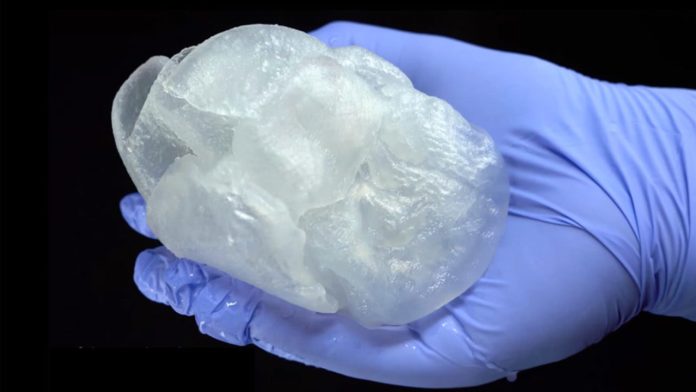Most are aware that pilots often train in a simulator prior to an actual flight in an unfamiliar plane to reduce risk of an untoward event such as a fatal crash. Now, UCLA cardiologists have announced that they have printed a 3-D model of a patient’s damaged heart to prepare for a noninvasive repair.
Last summer, Richard Whitaker was in the process of using his business expertise to start a new company. However, a major health problem impacted his plans. His pulmonary valve was failing, resulting in congestive heart failure and led to two hospitalizations within several months. Whitaker, now 66, required surgery to replace the valve, which controls the blood being pumped from the heart to the lungs. However, previous surgeries and the unique anatomy of his heart would have made conventional open-heart surgery too risky. Therefore, UCLA cardiologists decided to use a less invasive method to replace the valve.
The doctors had a 3-D model of Whitaker’s heart printed that could be used for practice before the actual procedure. The key question they needed to answer was whether a replacement valve would be compatible with his unusually large pulmonary arteries. “We are harnessing the latest technologies such as 3-D printing to help us better address the most complicated cases,” explained Dr. Jamil Aboulhosn, director of the Ahmanson/UCLA Adult Congenital Heart Disease Center and the Streisand/American Heart Association Endowed Chair in the Division of Cardiology at the David Geffen School of Medicine at UCLA.
The 3-D model was created using a CT scan of Whitaker’s heart; the model of his heart was created by Materialise, a provider of 3-D printing software and services. The model was constructed of a silicon-like material with properties similar to tissues and other structures in the heart. The UCLA team specified what areas of the model would be made from a harder material to simulate calcium deposits, and softer material, to represent heart muscle and vascular tissue.
Dr. Aboulhosn worked on the practice run with Dr. Daniel Levi, a pediatric cardiologist and director of UCLA’s congenital interventional catheterization laboratory, and Dr. Morris Salam of Kaiser, Los Angeles. The physicians guided a mesh-like stent into place, where it acted as scaffolding to hold the valve; they then guided the tightly packaged valve into the model. Once the valve was in place, the doctors opened it and found that it was a perfect fit.
After familiarizing themselves with the procedure, the doctors performed the real procedure on Whitaker at UCLA in mid-May. Using a catheter, they guided the valve and stent up to the heart through a small vein in the groin; as soon as the valve was placed and deployed, it instantly began to work Just four days after the procedure, Whitaker was discharged from the hospital. He explained, “I didn’t miss a beat and was able to get back to my life quickly.”
The pulmonary valve is one of four major valves in the heart. When it does not function correctly, it can cause the congestive heart failure symptoms that Whitaker had been experiencing, including fluid build-up, irregular heart rhythms, and kidney problems.
Whitaker had his pulmonary valve replaced in 1996. Dr. Aboulhosn said that pulmonary valves typically last between 10 and 20 years; thus, the need for a replacement was expected. He explained, “We are very pleased that Richard is doing well. With technologies such as 3-D printing and advances in minimally invasive procedures, congenital heart patients who might not have survived childhood 40 years ago are able to lead full, normal lives today.” Dr. Levi explained that improved technology is making 3-D printing an increasingly important tool for doctors. He said, “The models created from 3-D printing are becoming more and more realistic. Even now, they allow us to predict which strategies we can use and in which patients. In the future, they will be used to not only simulate procedures but also allow more rapid development of new devices to help individual patients.”
Whitaker plans to continue enjoying the challenges of his work; he is currently helping a friend start a cleaning business for commercial and medical buildings. When the project is completed, he plans to travel in Europe with his wife. Life is good!















